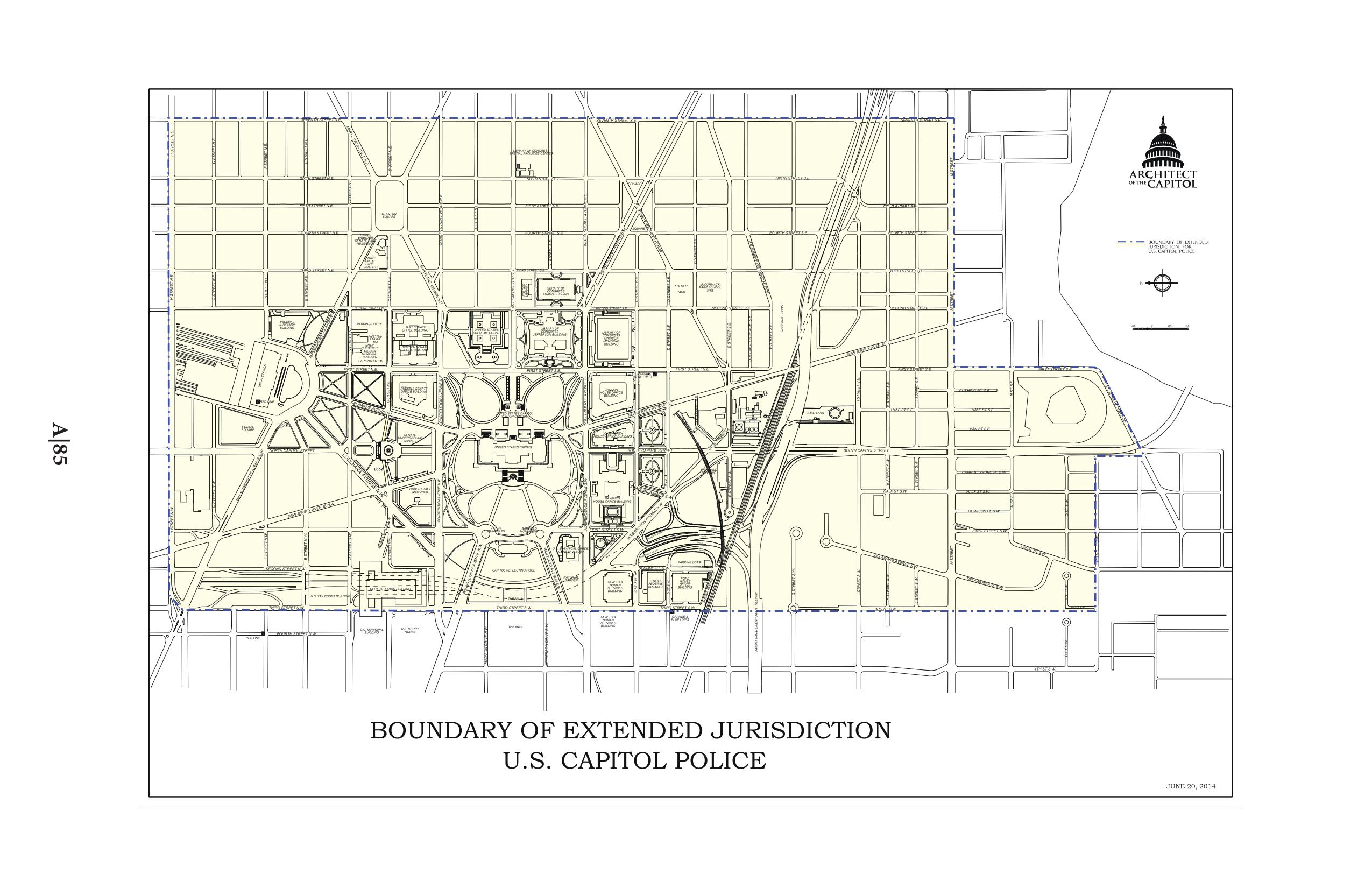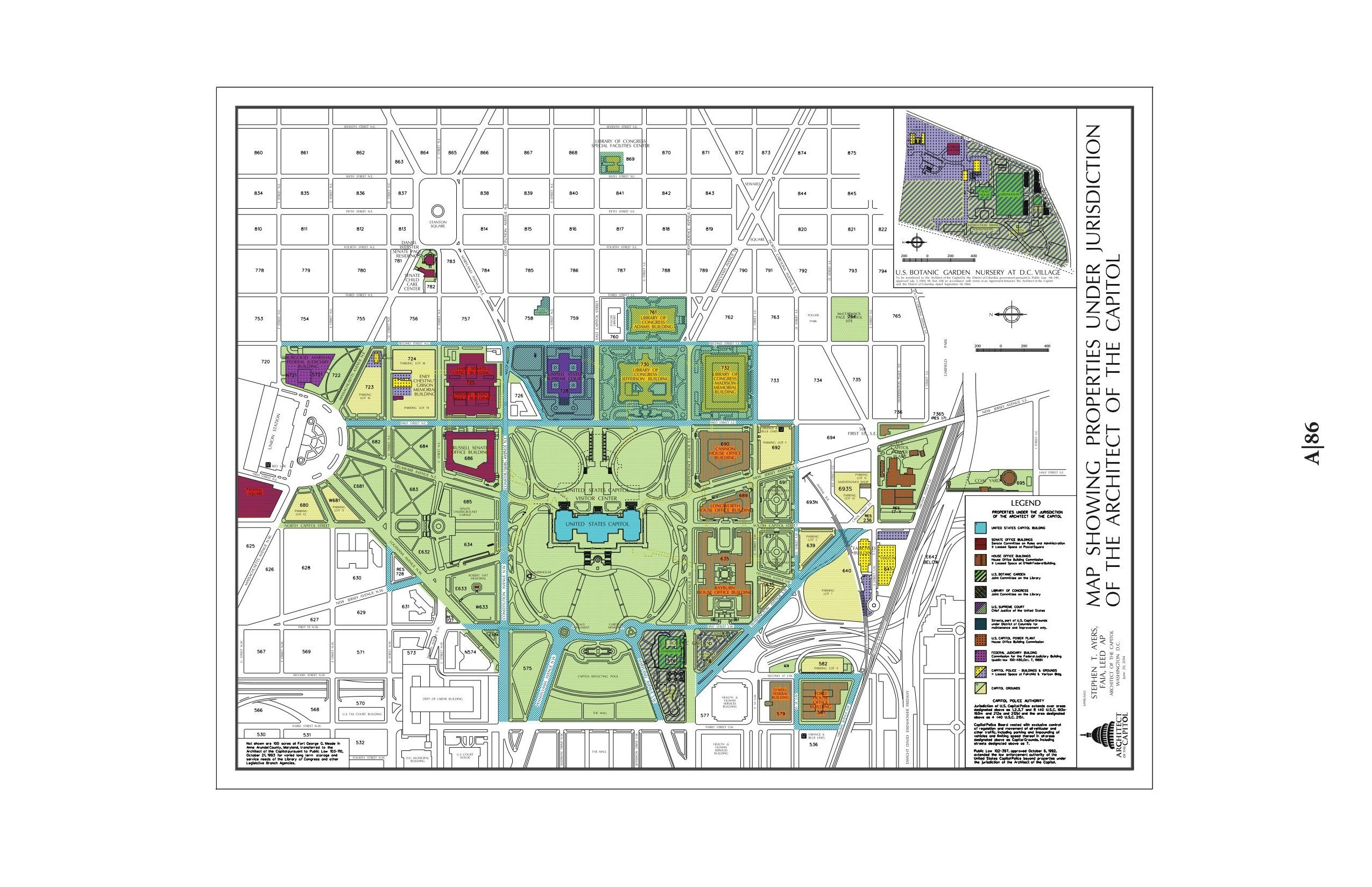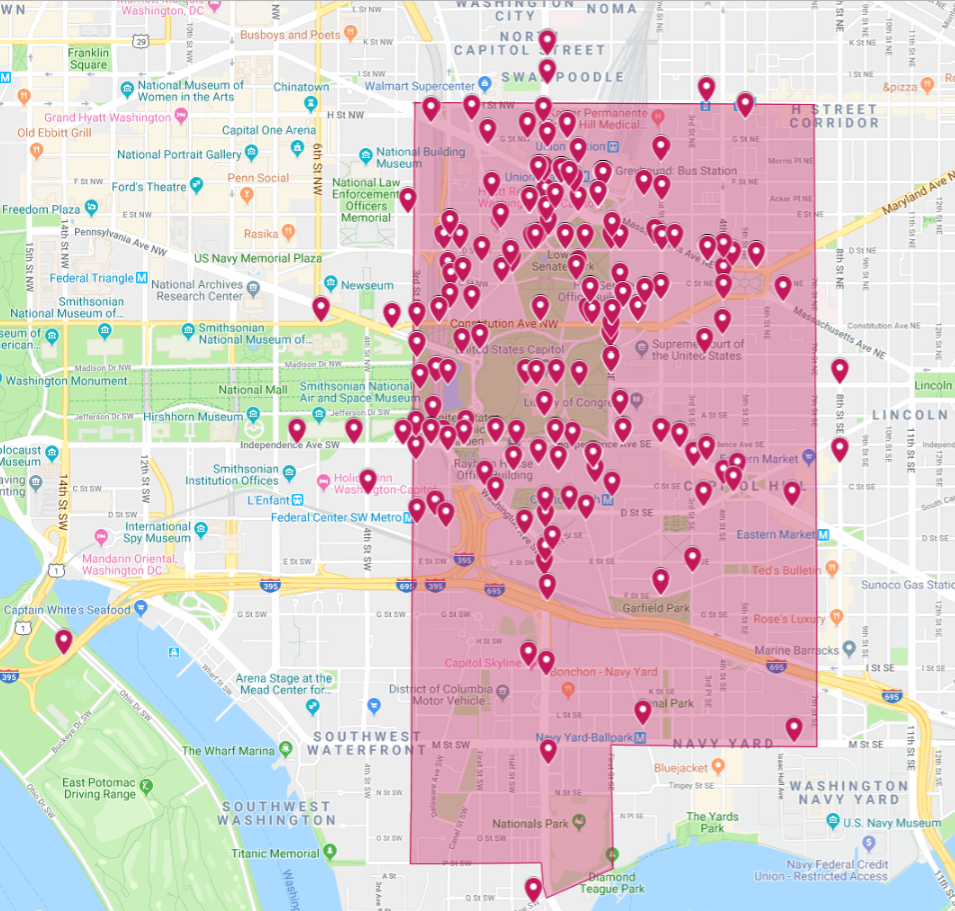The U.S. Capitol Police (USCP) isn’t your standard police department: tasked with keeping Congress safe while maintaining an open environment, USCP is more of a police-force-security-agency hybrid. The agency enjoys wide jurisdiction, but how wide exactly? We contacted the department in June to find out.
We requested a map of USCP’s jurisdiction and the agreement with DC police governing how the departments address jurisdictional overlap. USCP’s public information office declined to substantively respond to our request and several follow up inquiries.
Fortunately, it turns out a map of USCP’s extended jurisdiction is available on the USCP website, buried inside the traffic code document (page A85). Here it is:

USCP Boundary of Extended Jurisdiction
DC’s police department, a.k.a. the Metropolitan Police Department (MPD), helpfully pointed us to a document that clarifies how MPD and USCP navigate overlapping jurisdiction. The MPD General Order on Capitol Police Relationships says that USCP is responsible for policing United States Capitol buildings and grounds — which are defined in the document — while MPD is responsible for policing areas that are not considered Capitol buildings and grounds. USCP is also responsible for properties under the control of the Architect of the Capitol, with some exceptions.

Map of Architect of the Capitol Properties, Source: Page A86 of the Traffic Code
USCP has jurisdiction of the US Capitol and grounds in most situations; however, if there’s an incident such as a homicide case or a fatal traffic accident, the MPD is expected to take the lead and work in conjunction with USCP. Otherwise MPD can only respond to complaints or serve warrants in Capitol buildings or on Capitol grounds with the permission of the Capitol Police Board.
USCP is authorized to enforce both US law and DC law under the 1992 United States Capitol Police Jurisdiction Act (P.L. 102-397).
The map embedded below (or online here) depicts where USCP activity has occurred between December 2018 and July 2019 with reference to the department’s extended jurisdiction.

— Written by Amelia Strauss and Daniel Schuman
Download this report as a PDF here.
This article was updated on August 21, 2019 for the following reason:
The original version of this article linked to an earlier version of the MPD General Order General Order 310.1 on Capitol Police Relationships which was missing Attachment A “Map of the US Capitol Police Jurisdiction.”
MPD promptly responded to our request for Attachment A and uploaded an updated version of the order (including Attachment A) to its Written Directives Page.
